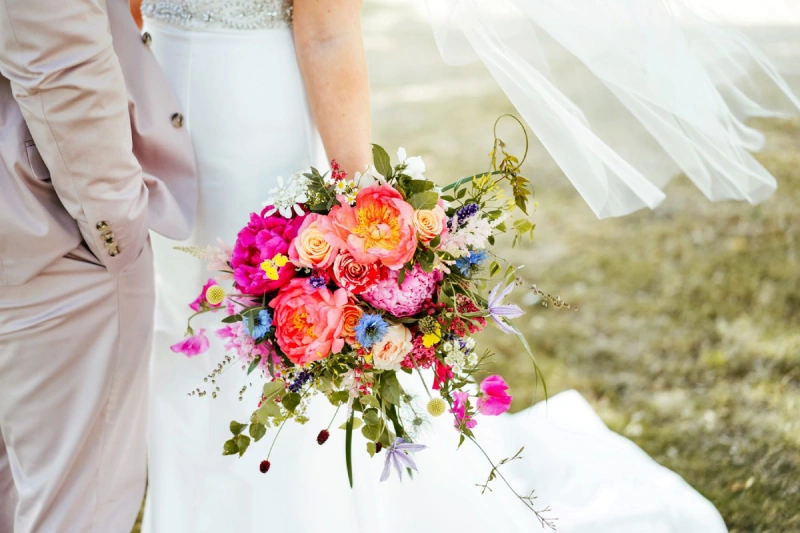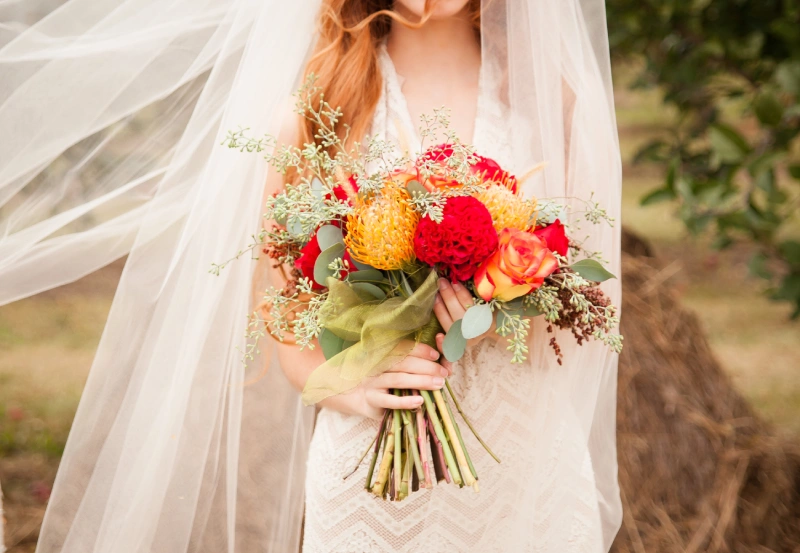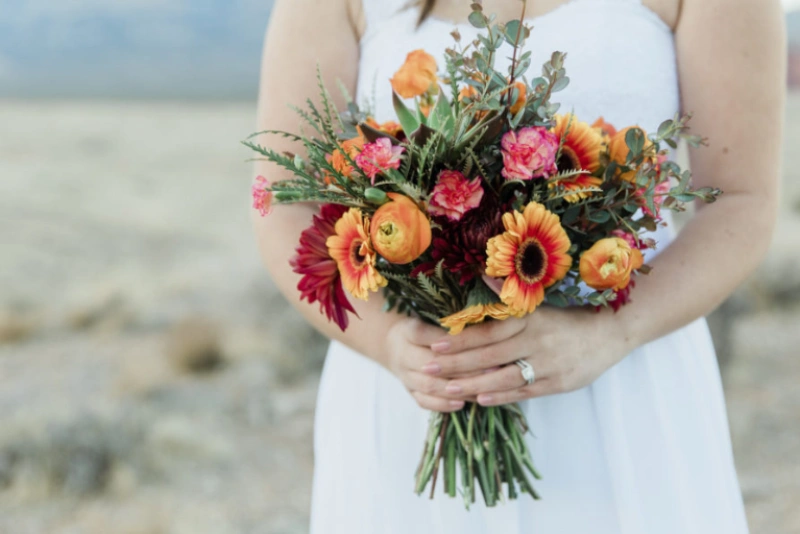Planning a wedding involves many decisions, and one of the most important choices you’ll make is selecting the perfect flowers for your venue. The right floral arrangements can enhance the ambiance of your wedding, create a cohesive theme, and add a touch of natural beauty to the space. But with so many options available, how do you choose the best wedding flowers for your venue?
In this article, we’ll provide you with invaluable tips and insights to help you navigate the world of wedding flowers. Whether you’re planning a rustic outdoor ceremony or an elegant ballroom reception, we’ll help you find the blooms that best suit your style and venue. From classic roses to trendy succulents, we’ll explore different flower types, color palettes, and arrangement styles to help you make informed decisions.
Our expert advice will guide you through the process of selecting flowers that complement your wedding theme, match your color scheme, and create a romantic atmosphere. Plus, we’ll share insider tips on working with florists and staying within your budget. Get ready to be inspired and transform your wedding venue into a floral paradise!
The importance of wedding flowers
Wedding flowers play a pivotal role in setting the mood and tone for the entire event. They are not just decorative elements; they symbolize love, beauty, and new beginnings. The right floral arrangements can transform a plain space into a romantic oasis, creating a warm and inviting atmosphere for you and your guests. From the bridal bouquet to the centerpieces on each table, flowers help to weave a visual narrative that complements the wedding’s overall theme.
Moreover, wedding flowers serve as a personal expression of your style and taste. They allow couples to showcase their personality and preferences, as well as reflect their cultural or familial traditions. Choosing the right flowers can help convey emotions and messages that resonate with you and your partner. Whether you opt for classic blooms or trendy alternatives, the choices you make will leave a lasting impression on your guests and become cherished memories captured in photographs.
Additionally, flowers can enhance the venue’s aesthetic, bringing life and vibrancy to the surroundings. They can soften hard lines and add a touch of softness to the décor. For instance, large floral arrangements can fill empty spaces in a grand hall, while delicate blooms can accentuate a rustic outdoor setting. The versatility of flowers means they can adapt to any venue, making them an indispensable element of wedding planning.
Factors to consider when choosing wedding flowers
When it comes to selecting wedding flowers, there are several factors to keep in mind to ensure you make the best choices for your special day. First and foremost, consider your wedding theme and style. Are you going for a traditional, modern, rustic, or bohemian vibe? Each theme has its own set of flowers that fit well within that aesthetic. For example, wildflowers may suit a rustic wedding, while elegant calla lilies might be perfect for a modern or formal event.
The venue is another critical factor in your flower selection process. The size, layout, and overall décor of the space should influence your choices. A large ballroom may require more substantial arrangements to fill the space, while a small garden setting might benefit from more intimate and delicate floral displays. Additionally, consider the seasonality of your venue’s surroundings. For instance, a beach wedding may lend itself to tropical flowers, while a mountain venue could be complemented by local wildflowers.
Lastly, think about your personal preferences and any allergies. It’s essential to choose flowers that resonate with you and your partner. If you have a favorite flower or color, incorporate those elements into your arrangements. Furthermore, if you or your guests have allergies, consider hypoallergenic options to ensure that everyone can enjoy the day comfortably. Keeping these factors in mind will help you select flowers that truly reflect your vision and enhance the beauty of your wedding.
Popular wedding flower options
When selecting flowers for your wedding, there are countless options to choose from. Some of the most popular wedding flowers include classic choices such as roses, peonies, and lilies. Roses are timeless and versatile, available in various colors and sizes, making them suitable for any wedding theme. Peonies are loved for their lush, full blooms and enchanting fragrance, perfect for romantic settings. Lilies, with their striking appearance and sweet scent, can add elegance to any arrangement.
In addition to these classics, many couples are opting for unique and trendy flowers to make their wedding stand out. Succulents have become increasingly popular due to their modern aesthetic and unique textures. They can be incorporated into bouquets, centerpieces, and even boutonnieres. Similarly, tropical flowers like orchids and anthuriums can bring a vibrant and exotic feel to beach or destination weddings. These options not only add visual interest but also showcase the couple’s personality.
Lastly, don’t forget about greenery and fillers. Foliage such as eucalyptus, ferns, and ivy can complement your main flower choices beautifully. Greenery adds depth and dimension to arrangements, enhancing the overall look while also being cost-effective. Mixing various flower types and textures allows for a more dynamic and visually appealing arrangement, ensuring your floral designs are as unique as your love story.
Seasonal availability of wedding flowers
Understanding the seasonal availability of flowers is crucial for making informed decisions when planning your wedding. Different flowers bloom at various times of the year, so being aware of what’s in season can help you select the freshest options that fit your budget. For instance, spring brings an abundance of vibrant blooms such as tulips, daffodils, and cherry blossoms, while summer showcases sunflowers, hydrangeas, and dahlias.
Choosing seasonal flowers not only ensures their availability but also helps you save money. Out-of-season flowers often come with a higher price tag due to import costs and limited supply. By opting for blooms that are naturally available during your wedding month, you can stay within your budget while still achieving stunning arrangements. Additionally, seasonal flowers are likely to be fresher and more vibrant, resulting in longer-lasting displays on your special day.
It’s also important to consider the climate of your wedding location. Certain flowers may thrive in particular environments, so researching how different blooms respond to your venue’s conditions can guide your selection. For instance, if you’re having a summer wedding in a warmer climate, choose flowers that can withstand heat, such as zinnias and marigolds. By aligning your floral choices with the season and climate, you’ll ensure that your wedding flowers are not only beautiful but also practical.
Choosing the right color scheme for wedding flowers
Choosing the right color scheme for your wedding flowers is essential for creating a cohesive and visually appealing aesthetic. Start by considering your overall wedding palette, which may include your venue décor, bridesmaids’ dresses, and groomsmen’s attire. Flowers should complement these colors and tie all elements together, enhancing the overall theme of your wedding. For more classic weddings, soft pastels or monochromatic palettes can create an elegant and timeless look.
On the other hand, vibrant and bold colors can infuse energy and excitement into your wedding. Think about the emotions you want to evoke with your color choices. Warm tones such as reds, oranges, and yellows can create a romantic and inviting atmosphere, while cool colors like blues and greens can impart a sense of calm and tranquility. If you’re unsure, consider using a color wheel to help you find complementary and contrasting shades that work harmoniously together.
Additionally, don’t hesitate to incorporate a mix of colors and textures in your arrangements. A monochromatic bouquet can be stunning, but adding varied shades and complementary hues can create depth and visual intrigue. Seasonal flowers will also provide natural color variations, enhancing the beauty of your arrangements. By thoughtfully selecting your color scheme, you’ll ensure that your flowers not only look beautiful but also resonate with the emotions and atmosphere you wish to create on your special day.
Budgeting for wedding flowers
When planning your wedding, it’s essential to allocate a budget for your floral arrangements to avoid overspending. Flowers can be one of the significant expenses of your wedding, so having a clear budget in mind will help guide your decisions. Start by researching average costs in your area for different types of arrangements, such as bouquets, centerpieces, and ceremony flowers. This information will provide a framework for what you can expect to spend.
Once you have a general idea of costs, prioritize your floral needs. Identify which arrangements are most important to you, whether it’s the bridal bouquet, reception centerpieces, or floral installations. By focusing your budget on the elements that matter most, you can allocate resources more effectively and make adjustments in other areas if necessary. For example, if the bridal bouquet is a top priority, consider opting for simpler centerpieces to balance the overall cost.
Finally, consider ways to save on your floral budget without sacrificing quality. Choose seasonal flowers, as they tend to be more affordable. Additionally, consider using fewer flowers and incorporating greenery to create a lush look at a lower cost. Reusing ceremony flowers for the reception can also stretch your budget further. By being strategic about your floral choices and staying within your budget, you can achieve stunning arrangements that enhance your wedding without breaking the bank.
Finding a reliable florist for your wedding
Selecting a reliable florist is a crucial step in ensuring that your wedding flowers meet your expectations. Start by researching local florists and reading reviews from past clients. Personal recommendations from friends or family can also provide valuable insight into florists who deliver quality service. Once you have a shortlist, schedule consultations to discuss your vision, budget, and any specific floral requirements.
During your consultation, pay attention to how the florist communicates and whether they are willing to listen to your ideas. A good florist should be open to collaboration, offering suggestions while also respecting your vision. Bring along inspiration photos, color swatches, and any relevant details about your wedding theme. This will help the florist understand your style and make tailored recommendations.
It’s also essential to discuss logistics during your meetings. Inquire about their availability on your wedding date, delivery and setup processes, and any potential issues they foresee. Clarifying these details upfront can prevent misunderstandings later on. Trust your instincts when selecting a florist—choose someone who not only understands your aesthetic but also makes you feel comfortable and confident in their abilities.
DIY vs. professional wedding flower arrangements
Deciding between DIY and professional flower arrangements can significantly impact your wedding planning experience. Choosing to create your floral arrangements can be a rewarding and cost-effective option, especially if you have a creative flair and a strong vision for your flowers. DIY arrangements allow couples to personalize every aspect of their floral designs, from selecting specific blooms to arranging them in a way that reflects their style.
However, DIY can also be time-consuming and labor-intensive. It requires careful planning, sourcing materials, and dedicating significant time to the project, which may add stress to your wedding preparations. If you decide to go the DIY route, enlist friends and family to help, and consider breaking the tasks into manageable chunks. There are many online tutorials and resources available to guide you through the process, ensuring that your arrangements turn out beautifully.
On the other hand, hiring a professional florist can alleviate much of the stress associated with floral arrangements. Florists have experience, knowledge, and access to a wider range of flowers, which can result in stunning designs that you might not achieve on your own. They handle the logistics of delivery and setup, allowing you to focus on other aspects of your wedding. Ultimately, the decision should align with your vision, budget, and the level of involvement you desire in your wedding planning process.
Tips for preserving wedding flowers
Many couples wish to preserve their wedding flowers as a keepsake, as they symbolize one of the most significant days of their lives. There are several methods to save your blooms, each offering unique results. One popular technique is air drying, where flowers are hung upside down in a cool, dark place until they fully dry. This method works well for flowers like roses and lavender, preserving their shape and color beautifully.
Another option is pressing flowers, which involves placing them between two sheets of heavy paper and applying pressure. This technique is ideal for flat flowers, such as daisies and pansies, and can be used to create unique art pieces, bookmarks, or wedding albums. For couples looking for a more modern approach, consider having your flowers freeze-dried. This process retains the blooms’ original shape and color, making them look as fresh as they did on your wedding day.
If you prefer to keep your flowers in their original arrangement, consider using a preservation service that specializes in floral preservation. These professionals can create stunning keepsakes, such as shadow boxes or resin encasements, that allow you to display your wedding bouquet beautifully. Whichever method you choose, preserving your wedding flowers can create lasting memories that you can cherish for years to come.
Conclusion
Choosing the best wedding flowers for your venue is an integral part of the wedding planning process, influencing not only the décor but also the overall ambiance of the day. By understanding the importance of flowers, considering various factors, and exploring popular options, you can create stunning arrangements that reflect your style and enhance your wedding theme.
Seasonality, color schemes, and budgeting are crucial elements that guide your floral decisions, while finding a reliable florist or deciding between DIY and professional arrangements will further shape your floral experience. Finally, preserving your wedding flowers allows you to keep a tangible reminder of your special day.
With careful planning and thoughtful choices, your wedding flowers can transform your venue into a breathtaking floral paradise, creating a beautiful and memorable setting for you and your guests to celebrate your love. Embrace the journey of selecting your flowers, and let them be a beautiful representation of your love story.



